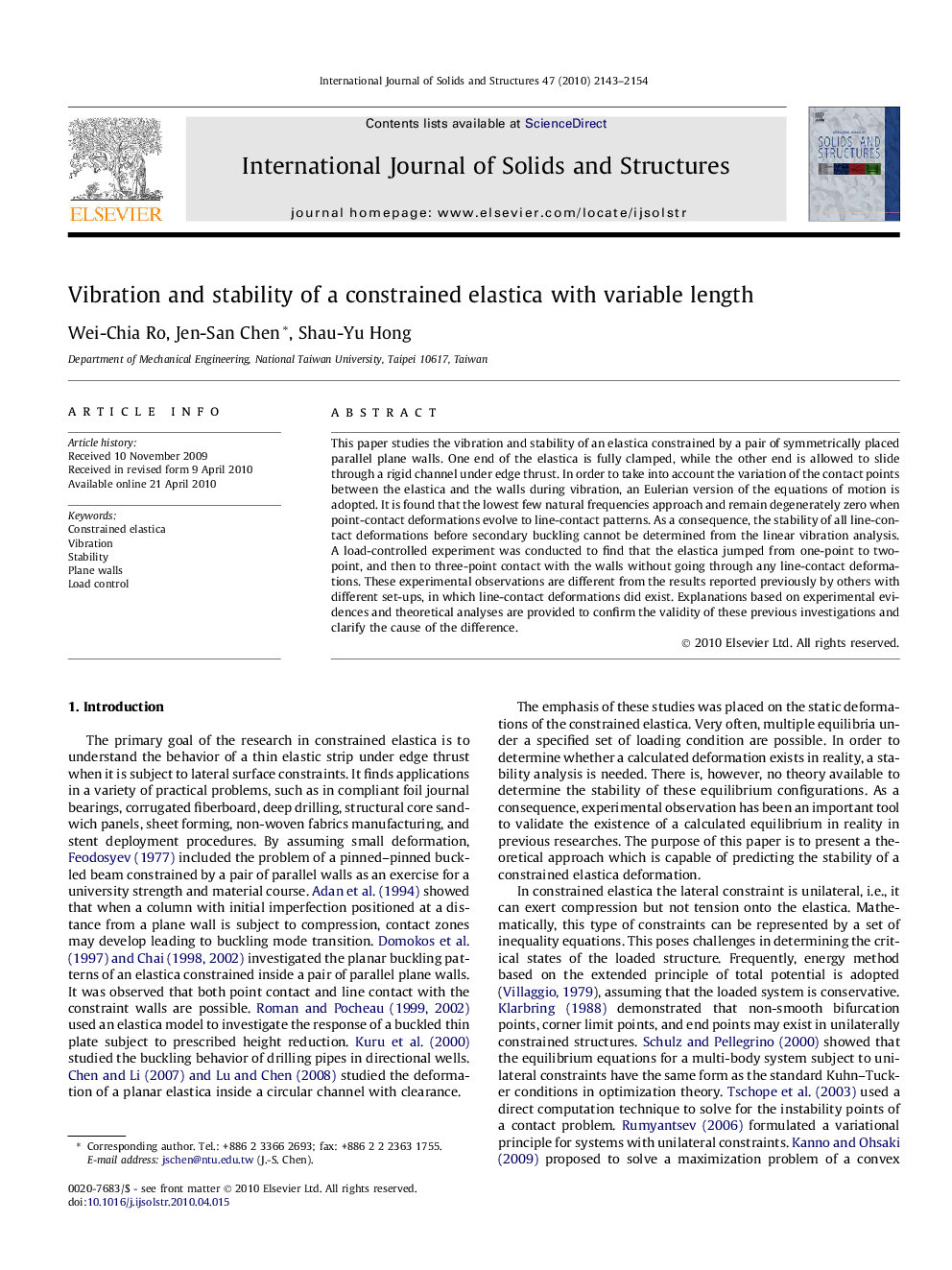| Article ID | Journal | Published Year | Pages | File Type |
|---|---|---|---|---|
| 278902 | International Journal of Solids and Structures | 2010 | 12 Pages |
This paper studies the vibration and stability of an elastica constrained by a pair of symmetrically placed parallel plane walls. One end of the elastica is fully clamped, while the other end is allowed to slide through a rigid channel under edge thrust. In order to take into account the variation of the contact points between the elastica and the walls during vibration, an Eulerian version of the equations of motion is adopted. It is found that the lowest few natural frequencies approach and remain degenerately zero when point-contact deformations evolve to line-contact patterns. As a consequence, the stability of all line-contact deformations before secondary buckling cannot be determined from the linear vibration analysis. A load-controlled experiment was conducted to find that the elastica jumped from one-point to two-point, and then to three-point contact with the walls without going through any line-contact deformations. These experimental observations are different from the results reported previously by others with different set-ups, in which line-contact deformations did exist. Explanations based on experimental evidences and theoretical analyses are provided to confirm the validity of these previous investigations and clarify the cause of the difference.
